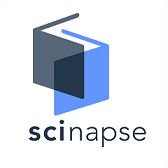Nutritional Strategies to Optimise the Probiotic Antimicrobial Efficacy of Lactobacillus acidophilus NCFM against Enteric Pathogens: Comparative Analysis between Natural Bee Honey and Mineralised Sugars
Abstract
The human gastrointestinal tract is home to a complex and dynamic community of microorganisms that collectively influence health, nutrition, and disease. Pathogens have evolved mechanisms to exploit host resources more aggressively, often at the expense of both the host and beneficial microbes, whereas probiotic organisms rely on mutualistic interactions with the host and are generally restricted to dietary and endogenous substrates present in the gut. Pathogens frequently adopt invasive and parasitic strategies, directly extracting nutrients from host tissues. Within this ecosystem, probiotic bacteria play critical roles in maintaining gut homeostasis, enhancing immune defences, inhibiting pathogens, and supporting digestive processes. However, their efficacy is variable and often dependent on nutrient availability. Optimising nutritional support may enhance probiotic growth and antimicrobial activity. This study highlights the critical role of nutritional strategies in optimising the antimicrobial efficacy of Lactobacillus acidophilus NCFM against enteric pathogens. The comparative evaluation between mineralised sugar (sugar + mineral supplementation) and honey as nutritional strategies for Lactobacillus acidophilus NCFM highlights important metabolic and ecological considerations in optimising probiotic antimicrobial efficacy. The central difference lies in how these substrates interact with the Embden–Meyerhof–Parnas (EMP) glycolytic pathway and in their subsequent ability to drive lactic acid accumulation, bacteriocin synthesis, and pathogen inhibition. The findings confirm the inherent superiority of honey, but also give a crucial nuance that glucose with sufficient minerals will likely be the only possible substitute that can match the performance of honey. This evidence points to the fact that honey has an exceptionally high probiotic stimulation potency, and no other sugar other than mineralised-glucose (glucose+minerals) can equal this potency. Honey outperformed other sugars because it served as a source of energy to the metabolism of L. acidophilus and as an independent antimicrobial agent.
Downloads
References
Al-Shimmary, S. M., Shehab, Z. H., & Emad Hamdi Jassim. (2024). Synthesis and characterization of cerium oxide-bacteriocin nanohybride with synergistic biological activities. Egyptian Journal of Basic and Applied Sciences, 12(1), 1– 16. https://doi.org/10.1080/2314808x.2024.2442250
Barbosa, T. M., Serra, C. R., La Ragione, R. M., Woodward, M. J., & Henriques, A. O. (2005). Screening for Bacillus Isolates in the Broiler Gastrointestinal Tract. Applied and Environmental Microbiology, 71(2), 968–978. https://doi.org/10.1128/aem.71.2.968-978.2005
Chang, E.-S., Hsu, C.-Y., Li, J.-C., Dubey, R., Kan, W.-C., Sheu, M.-J., Cheng, C.-H., Chang, C.-Y., Hsu, C.-C., & Chuu, J.-J. (2025). Therapeutic potential of probiotic Lactobacillus spp. Fermented Talinum triangulare on Helicobacter pylori associated gastrointestinal infectious disorders. CyTA – Journal of Food, 23(1). https://doi.org/10.1080/19476337.2025.2458164
Choi, G.-H., Holzapfel, W. H., & Todorov, S. D. (2022). Diversity of the bacteriocins, their classification and potential applications in combat of antibiotic resistant and clinically relevant pathogens. Critical Reviews in Microbiology, 1– 20. https://doi.org/10.1080/1040841x.2022.2090227
Dela, L. T., & Yvette, S. (2023). Initial culture media pH influences the antibacterial activity and metabolic footprint of Lactobacillus acidophilus BIOTECH 1900. Preparative Biochemistry & Biotechnology, 54(4), 535–544. https://doi.org/10.1080/10826068.2023.2253461
Dharsini, S. P., Suganya, K., & Sumathi, S. (2023). Identification of potential probiotics from fermented sour traditional rice varieties and in vitro simulation studies. Natural Product Research, 1– 8. https://doi.org/10.1080/14786419.2023.2230608
Fisher, A. A., Laing, J. E., Stoeckel, J. E., & Townsend, J. W. (1998). Handbook for family planning operations research design. Population Council.
Gufe, C., Chijaka, T., Muteveri, T., Katsande, P., Mbonjani, B., & Jambwa, P. (2025). In vitro biological effects of pinewood sawdust and sugarcane bagasse- derived xylooligosaccharides on Lactobacillus biomass and antibacterial properties of its postbiotics on multidrug- resistant mastitogenic Staphylococcus aureus. Cogent Food & Agriculture, 11(1). https://doi.org/10.1080/23311932.2025.2546991
Halko, R., Tuček, J., Chovancová, K., & Andruch, V. (2022). Some green approaches in atomic absorption spectrometry. The last 10 years. Applied Spectroscopy Reviews, 58(10), 786–833. https://doi.org/10.1080/05704928.2022.2148685
Herzog, M. K.-M., Peters, A., Shayya, N., Cazzaniga, M., Kardokh, K. B., Arora, T., Barthel, M., Gül, E., Maurer, L., Kiefer, P., Christen, P., Endhardt, K., Vorholt, J. A., Frankel, G., Heimesaat, M. M., Bereswill, S., Gahan, M., Claesson, M. J., Domingo-Almenara, X., & Hardt, W.-D. (2025). Comparing Campylobacter jejuni to three other enteric pathogens in OligoMM 12 mice reveals pathogen-specific host and microbiota responses. Gut Microbes, 17(1). https://doi.org/10.1080/19490976.2024.2447832
Islam, F., Azmat, F., Imran, A., Zippi, M., Hong, W., Tariq, F., Shehzadi, U., Fatima, A., Safdar, M., Ahmed, H., Ijaz, M., Zeeshan, F., Ali, R., Asif Shah, M., & Suleria, H. A. R. (2024). Role of postbiotics in food and health: a comprehensive review. CyTA - Journal of Food, 22(1). https://doi.org/10.1080/19476337.2024.2386412
Jaya, F., Radiati, L. E., Estiasih, T., & Masyithoh, D. (2025). Effect of honey powder concentration on physicochemical and sensory characteristics of spray-dried yogurt. CyTA – Journal of Food, 23(1). https://doi.org/10.1080/19476337.2025.2566758
Kim, K. S., Tiffany, E., Lee, J.-Y., Oh, A., Jin, H.-S., Kim, J.-S., Lee, J.-S., Nam, M. H., Hong, S.-J., Park, S., Koh, H., Kim, B.-S., Lee, Y. K., & Lee, D.-W. (2023). Genome-wide multi-omics analysis reveals the nutrient-dependent metabolic features of mucin-degrading gut bacteria. Gut Microbes, 15(1). https://doi.org/10.1080/19490976.2023.2221811
Lo Vecchio, G., Di Salvo, E., De Maria, L., Nava, V., Rando, R., Gervasi, T., & Cicero, N. (2023). Opuntia ficus indica cladode as fermentation feedstock for lactic acid production by Lactobacillus acidophilus LA 5. Natural Product Research, 38(24), 4383–4389. https://doi.org/10.1080/14786419.2023.2284253
Mahendrarajan, V., & Nalini, E. (2025). In silico analysis of bacteriocins from Lactobacillus acidophilus membrane vesicles against Streptococcus mutans GtfB protein. Journal of Biomolecular Structure and Dynamics, 1–11. https://doi.org/10.1080/07391102.2025.2460743
Miao, M., Cheng, J., Yan, Q., Jiang, Z., & Yang, S. (2025). Prebiotic activity comparison of eight oligosaccharides: selection of a potential synbiotic containing konjac manna-oligosaccharides and Bifidobacterium animalis BB-12. International Journal of Food Sciences and Nutrition, 76(4), 419–429. https://doi.org/10.1080/09637486.2025.2494148
Nabavi-Rad, A., Sadeghi, A., Asadzadeh Aghdaei, H., Yadegar, A., Smith, S. M., & Zali, M. R. (2022). The double-edged sword of probiotic supplementation on gut microbiota structure in Helicobacter pylori management. Gut Microbes, 14(1), 2108655. https://doi.org/10.1080/19490976.2022.2108655
Nadeem, R., Imran, A., Wei, C. R., Naz, S., Waheed, W., Akram, M. A., Ahmed, A., Tahir, S., Islam, F., & Befa Kinki, A. (2024). A review on the potential impact of probiotics and prebiotics in enhancing health benefits. Cogent Food & Agriculture, 10(1). https://doi.org/10.1080/23311932.2024.2409831
Sa’aid, N., & Tan, J. S. (2025). From probiotic fermentation to functional drinks: a review on fruit juices with lactic acid bacteria and prebiotics. Preparative Biochemistry & Biotechnology, 1– 20. https://doi.org/10.1080/10826068.2025.2467441
Sasi, M., Kumar, S., Hasan, M., Arpitha, S. R., Garcia-Gutierrez, E., Kumari, S., Prakash, O., Nain, L., Sachdev, A., & Dahuja, A. (2022). Current trends in the development of soy-based foods containing probiotics and paving the path for soy-synbiotics. Critical Reviews in Food Science and Nutrition, 1–19. https://doi.org/10.1080/10408398.2022.2078272
Singh, R. G., Aoki, F., Seuma, M. R.-P., Aguilo, M., Washida, M., Espadaler-Mazo, J., Al-Wahsh, H., Crowley, D. C., Guthrie, N., Evans, M., Moulin, M., & Lewis, E. (2025). Efficacy of Probiotic Supplementation with Lactiplantibacillus plantarum Strains on Gastrointestinal Tract Function – A Randomized Controlled Trial. Journal of Dietary Supplements, 1– 22. https://doi.org/10.1080/19390211.2025.2507610
Sun, H., Zhang, H., Lai, W., Lei, L., Li, J., Chen, M., Li, H., & Zhao, Z. (2025). Clinical and microbiological characteristics and prognosis of invasive infection caused by Klebsiella pneumoniae in the community. Annals of Medicine, 57(1). https://doi.org/10.1080/07853890.2025.2450526
Tian, Y., Yao, T., Shi, Y., Li, Y., Shen, J., Xu, F., Gao, X., & Qin, K. (2024). Identification of the Bioactive Compounds of Raw and Honey-Processed Farfarae Flos by High-Performance Liquid Chromatography-Mass Spectrometry (HPLC-MS) with the Spectrum-Effect Relationship and Chemometrics. Analytical Letters, 57(16), 2598– 2615. https://doi.org/10.1080/00032719.2023.2300334
Wang, K., Duan, F., Sun, T., Zhang, Y., & Lu, L. (2023). Galactooligosaccharides: Synthesis, metabolism, bioactivities and food applications. Critical Reviews in Food Science and Nutrition, 1– 17. https://doi.org/10.1080/10408398.2022.2164244
Wu, Q., Kan, J., Cui, Z., Ma, Y., Liu, X., Dong, R., Huang, D., Chen, L., Du, J., & Fu, C. (2024). Understanding the nutritional benefits through plant proteins-probiotics interactions: mechanisms, challenges, and perspectives. Critical Reviews in Food Science and Nutrition, 1– 19. https://doi.org/10.1080/10408398.2024.2369694
Yaacob, S. N., Wahab, R. A., Misson, M., Sabullah, M. K., Huyop, F., & Zin, N. M. (2022). Lactic acid bacteria and their bacteriocins: new potential weapons in the fight against methicillin-resistant Staphylococcus aureus. Future Microbiology, 17, 683–699. https://doi.org/10.2217/fmb-2021-0256
Yu, L., Gao, Y., Ye, Z., Duan, H., Zhao, J., Zhang, H., Narbad, A., Tian, F., Zhai, Q., & Chen, W. (2023). Interaction of beta-glucans with gut microbiota: Dietary origins, structures, degradation, metabolism, and beneficial function. Critical Reviews in Food Science and Nutrition, 1– 26. https://doi.org/10.1080/10408398.2023.2217727
Copyright (c) 2025 Vitalis Barasa Namiti, Andrew Kimang’a Nyerere, PhD, John Ndemi Kiiru, PhD

This work is licensed under a Creative Commons Attribution 4.0 International License.




























